Conservation strategic plan
2021-2030
The Conservancy’s vision is to inspire a lifetime of exploration and stewardship of the natural and cultural world by encouraging experiences with the wild that deepen understanding of the connections between nature and self. We preserve and restore the environment on Catalina, promoting and modeling ecologically sustainable communities to create a healthier future for this Island and our Earth.
The mission of the Catalina Island Conservancy is to be a responsible steward of its lands through a balance of conservation, education and recreation.
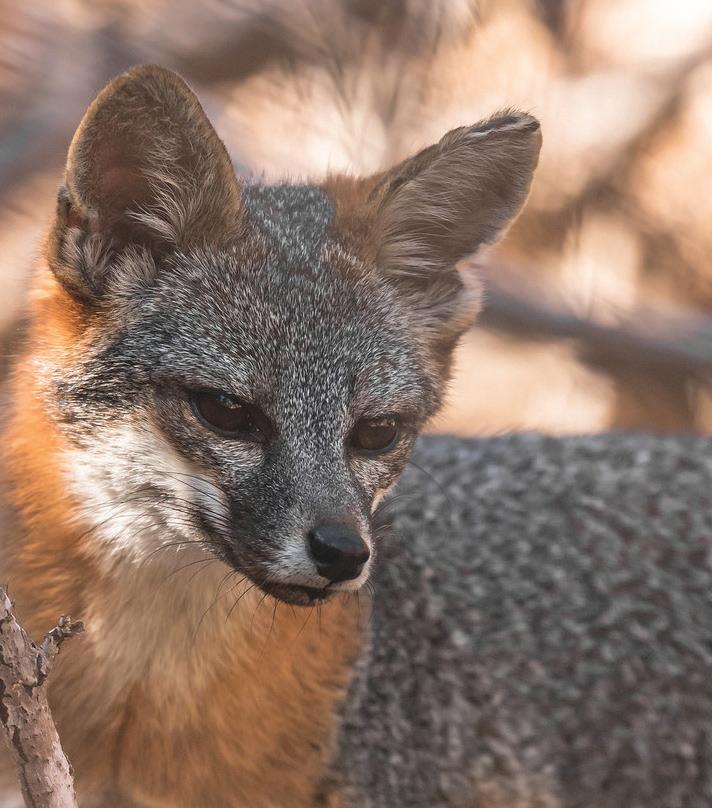


TM
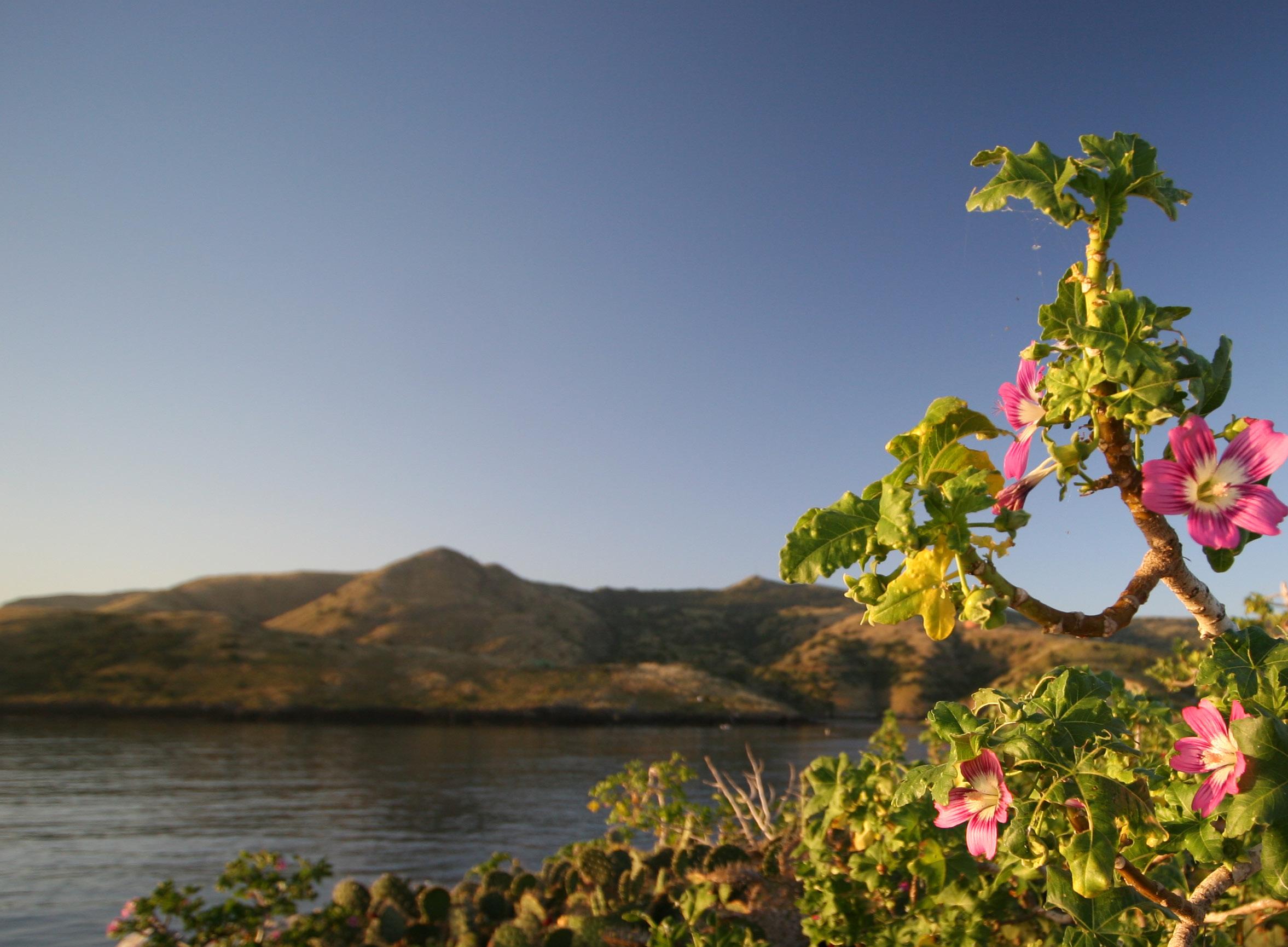
Table of Contents Core Values ................................................................................ Why safeguard and cherish Catalina Island?................................ Purposes of the conservation plan............................................... 1. Long term resiliency................................................................. 2. Plant communities and species................................................ 3. Animal populations and species.............................................. 4. Research and partnership development................................... 5. Cultural resources................................................................... 6. Sustainability and balance........................................................ Appendix 1: Endemic Animal Species.......................................... Appendix 2: Endemic Plants........................................................ Appendix 3: Invasive Plant Management Approach..................... Appendix 4: Conservation Plan Framework................................. 3 4 5 6 7 8 9 10 11 12 14 16 18
Core Values
All actions of the Conservancy – its Board, staff and volunteers – are guided by shared core values integrated across all aspects of our work:
• We value and appreciate Catalina Island and its marine environment as a natural wonder, a haven for rare and native species, a place of enjoyment and respite in nature, and a treasured piece of California history.
• We believe that responsible stewardship of Catalina Island should be a thoughtful balance of conservation, education and recreation where each is pursued in ways that enhance the other without degrading the overall health of the ecosystem.
• We believe that 21st century conservation must be based in sound science and value both the current and future needs of society.
• We believe that life-long learning and educational experiences in nature can inspire people to become responsible stewards of the Earth.
• We believe that responsible and informed nature-based recreation is a powerful vehicle for engaging people in the on-going stewardship of natural and cultural resources.
• We believe that collaboration both with those who enjoy Catalina Island, and the organizations and individuals who can lend needed expertise, is fundamental to protecting nature’s wild places and ensuring that they remain accessible.
• We believe that sustainable conservation - protecting Catalina’s wildlands in perpetuity - requires a robust financial and operational model that holds the organization to the highest ethical, safety and management standards, and includes social enterprise as well as philanthropy.
• We value and appreciate the Conservancy’s dedicated staff, volunteers, supporters and partners, without whom it could not be successful in its mission.
• We believe that the success of the Conservancy on Catalina Island will become a model for helping to address the world’s environmental challenges and for shaping a sustainable future.
3
why safeguard and cherish catalina island?
Catalina Island is a special ecosystem beloved by millions of people with a unique opportunity to use conservation to educate and create enjoyable experiences for everyone into the future. In 1972, when the Catalina Island Conservancy was formed, much of southern California’s coastline was still wild. Today, Catalina Island, 20 miles offshore of the burgeoning Los Angeles metropolis, is one of the largest privately held wild areas in the state and among the best-preserved examples of undeveloped coastline in the region. More than 88% of its lands are under protection (owned and managed by the Conservancy) and 98% of its surface is designated open space in the Local Coastal Plan.
Catalina Island is a haven for biodiversity with 16 unique and rare plant communities and at least 60 known species of plants and animals found nowhere else in the world. Catalina lies within The California Floristic Province, a biodiversity hotspot represented by the Mediterranean-type climate characterized by hot, dry summers and cool, wet winters. The California Floristic Province is one of the global 36 “biodiversity hotspots,” the most diverse and threatened places on Earth, and is home to more than 3,000 species of vascular plants, 60% of which are endemic to the Province. It is also one of the most threatened places on Earth, having lost more than 70% of its primary native vegetation. Additionally, the Island possesses a number of archaeological sites and cultural artifacts.
Each of us is part of the natural world, with our survival depending on healthy, functioning ecosystems that provide the soil under our feet, the water we drink, and the air we breathe. Open spaces and natural areas are our supermarkets and our pharmacies; they are also places to build physical health and seek intellectual and spiritual renewal. Natural places are the source of our well-being – not an indulgence or an option, but a necessity. Catalina Island is such a place. Catalina Island offers the kind of peace and respite usually found in more remote areas: clean air, breathtaking vistas and unparalleled opportunities for people to connect with wild nature. As wild spaces decline and the demand for access to those that remain rises, the Catalina Island Conservancy will be ready to meet society’s desire for recreation and enrichment.
Catalina Island is changing. Its natural communities are evolving in response to new conditions brought about by human activity, arrival of non-native species, climate change and varying water availability. Our management goal therefore cannot be the preservation of Catalina Island as a static landscape, an ideal fixed in time. The challenge of conservation is to maintain robust, resilient ecosystems and healthy species while allowing for change, rather than to defend an imagined historical ideal. We are informed by the past, but not beholden to it.
Our guiding principles include: a) Ecosystem change is inevitable and includes both positive and negative elements; b) Maintain system flexibility for future change; c) Adaptive conservation requires innovative thinking and testing of new approaches; d) Our organization, and the Island community as a whole, must adjust to the ongoing changes in the environment.
4
purposes of the conservation plan
Catalina Island Conservancy 2030 Conservation Plan aims to present:
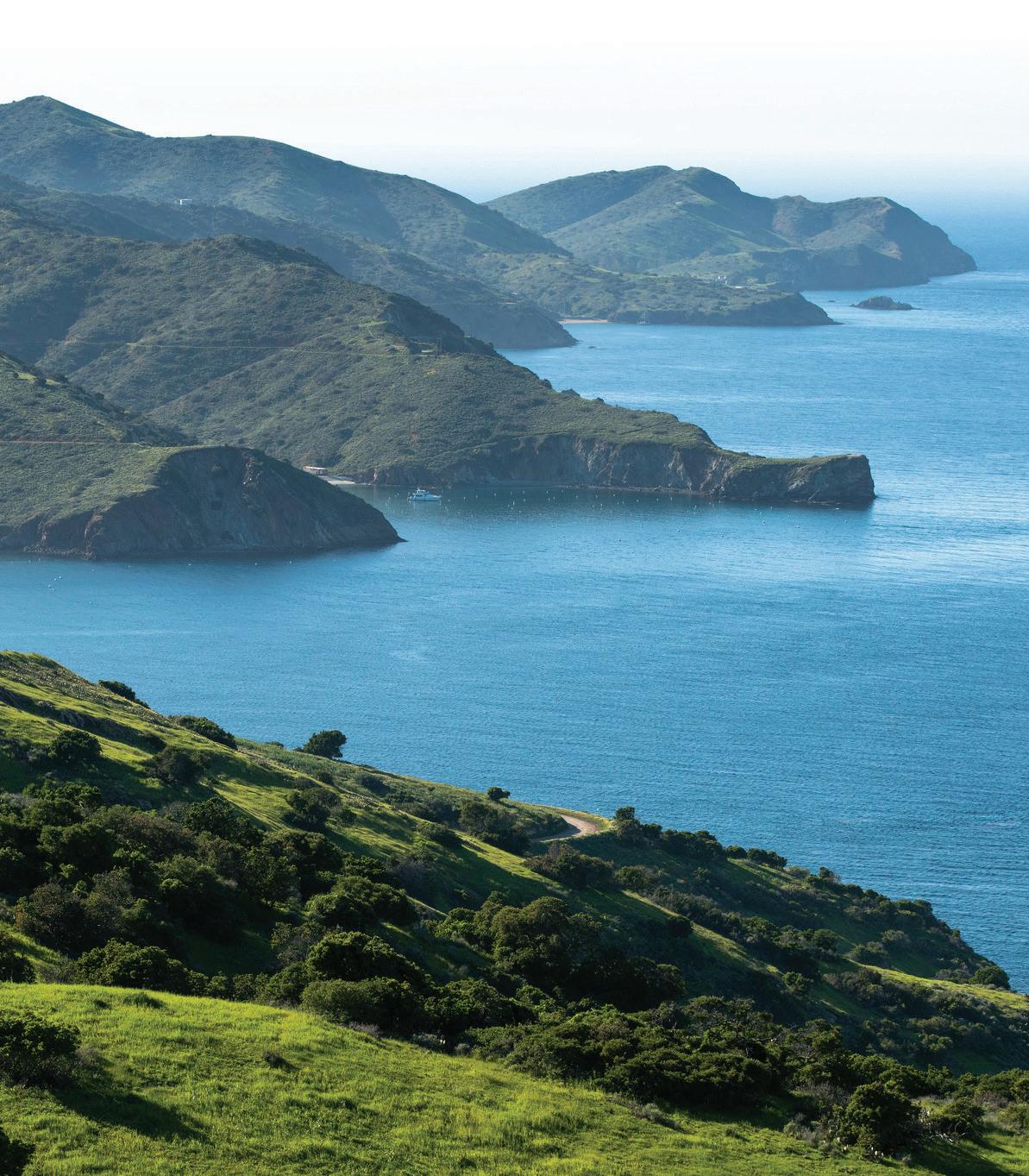

• Our vision for conservation on Catalina, conservation department goals and extradepartmental coordination plans.
• An adaptive conservation framework that can be critiqued, tested, improved and reprioritized as new knowledge, threats and opportunities arise. We will update and revise the strategy at two-year intervals and conduct a rigorous “mid-term” evaluation of our progress and of this strategy by 2025.
• A logical plan for our daily activities that collectively will lead to short-term objectives and long-term desired outcomes (Appendix 4).
• An approach that inspires investment and partnerships on individual projects that contribute to the “big picture.”
• A process to help Conservancy staff communicate and collaborate with agencies, organizations and individuals concerned with our conservation ambitions.
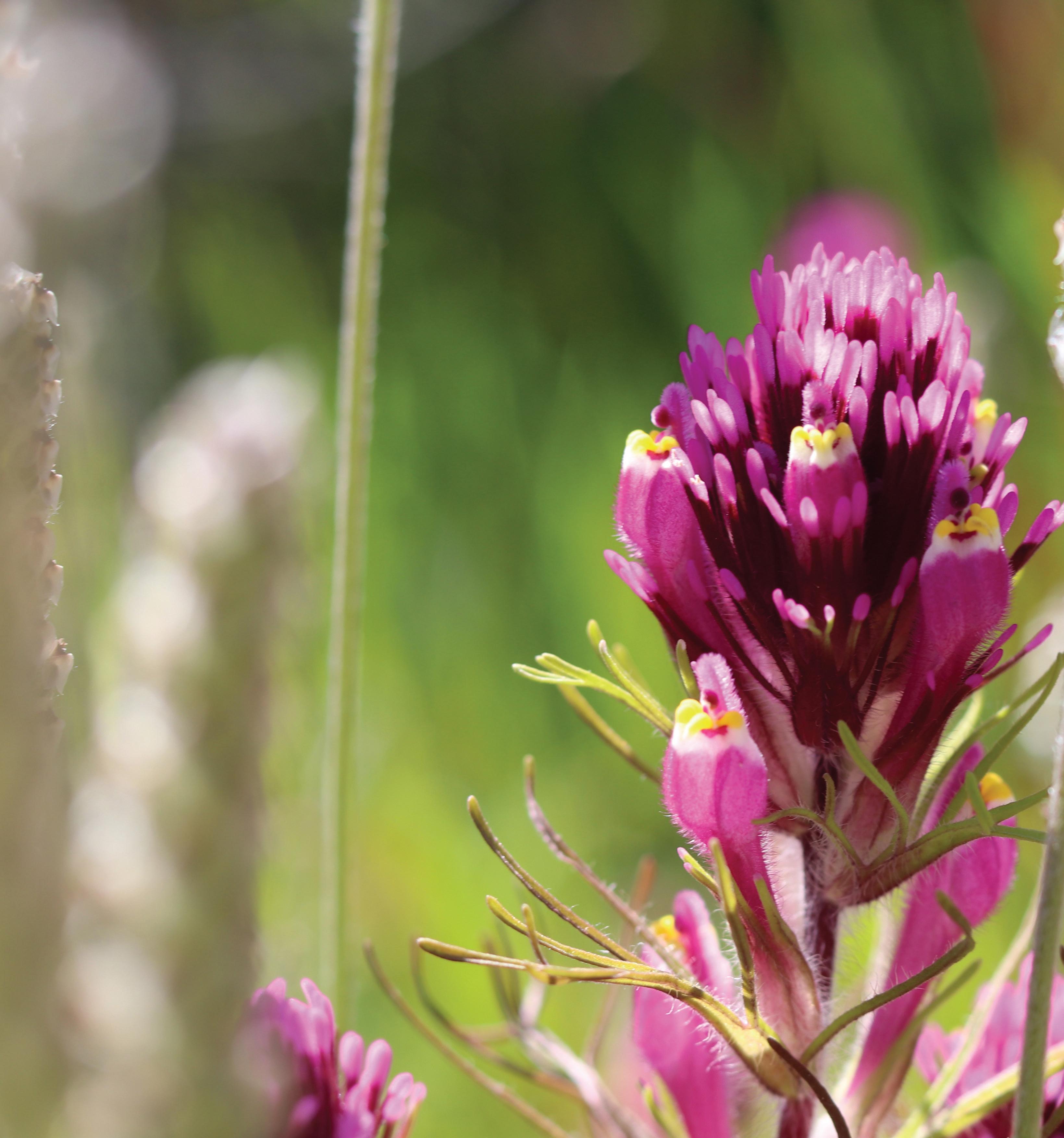
5
1. Long Term Resiliency
An Island whose ecosystem is resilient and has the capacity to adapt to future changes.
Catalina Island is a dynamic, evolving ecosystem that cannot be managed towards a static, ideal state. One of our primary goals is to plan for the long-term future of the Island. We need to understand our ecosystems in order to develop strategies to guide their inevitable changes due to factors such as groundwater availability, climate, fires and arrival of new species.
The inevitability of ecosystem changes and their impacts require adaptive resource management. Our practices must be continually informed by evolving knowledge and research. Understanding these complex processes and acting accordingly is critical to ensuring our Island’s ecosystem is resilient and adaptable to future changes.
Resiliency issues we will address:
• Balanced use of water
• Fire mitigation
• Invasive species management
• Climate change adaptation
Goal 1.1 Strategy to manage surface and groundwater resources to balance the needs of the Island’s ecosystem and human population.
Goal 1.2 Natural and man-made fire management plan compatible with conservation objectives without compromising life and property.
Goal 1.3 Manage mule deer to reduce animal suffering, ensure plants are no longer extirpated and allow for landscape restoration.

Goal 1.4 Management of invasive plant species so that native species, their communities, and the Island ecosystem are not adversely affected.
Goal 1.5 Development of sufficiently precise climate change models so that the effects of climate change can be incorporated into land and water system management decision-making.
5
6
2. plant communities and species
An Island with resilient natural plant communities in which common and abundant species and rare and endemic flora communities are not at risk.
Plants link the abiotic and living worlds, transforming inanimate matter and energy into the materials necessary for life. As such, they are the foundation of every terrestrial ecosystem and make possible the vast array of life forms comprising our biosphere. The health of a landscape can be read in the health of its plants.
Catalina Island offers a snapshot of southern California’s vegetation as it might have looked before the population growth and its resultant development in the 20th century. Our Island is steadily recovering from years of overgrazing by domestic animals and continues to experience heavy grazing impacts by certain non-native mammals. While showing some signs of recovery, oak habitats are still declining and a range of endemic species continue to be limited in distribution. While recognizing that a return to some imagined “pristine state” is impossible, we aim to protect and manage all native floristic biodiversity while guiding landscape recovery.
Resiliency issues we
will address:
• Maintain rare, listed and endemic plants
• Support rare plant communities
• Conserve native plant taxa
• Monitor characteristic plant communities
• Restore oak woodland and chaparral
Goal 2.1 Viable populations of all Catalina endemic and state- and federally-listed plant species are maintained through appropriate and necessary survey, inventory and management activities.
Goal 2.2 Viable native plant communities are maintained and supported through appropriate survey, inventory and management activities.
Goal 2.3 A genetic repository comprising at least 90% of Catalina’s native plant taxa is developed and maintained through seed banking, as well as conservation plantings—both in-situ and ex-situ.
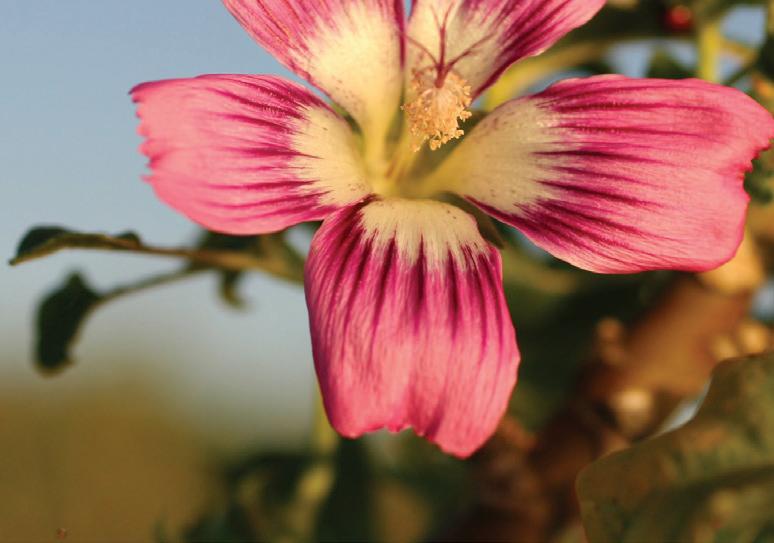
Goal 2.4 The Island-wide conservation status of characteristic plant communities is assessed periodically so that evidence-based management decisions can be made and evaluated.
Goal 2.5 Reverse the 60-year decline of the oak (Quercus pacifica and Q. tomentella) woodland, estimated at 5,000 acres (or 31% of the Island).
5
7
3. Animal populations and species
Santa Catalina Island has a wider diversity of animals than most of the other Southern California Channel Islands due to its larger size and proximity to the mainland. While the terrestrial habitat is slowly recovering from grazing, significant pressures remain for the Island’s known and unknown animal denizens – predation by cats and rats on mammals and birds, spread of aggressive invasive ants and the vulnerability of oak, mesic and aquatic habitats. We need to remain highly vigilant.
The most emblematic mammal, the Catalina Island fox, remains listed as “threatened” by the U.S. Fish and Wildlife Service, a term that recognizes their incredible recovery from near extinction while retaining protection against the enduring threats on this heavily-visited Island. Though the population is currently healthy, ongoing conservation work is necessary to ensure this Island ambassador continues to thrive.
Exciting conservation opportunities remain. In 2020, during a remote camera research effort, a live Catalina Island Shrew, an endemic species listed as a Species of Special Concern, was observed for the first time since 2004. In the upcoming decade, the Conservancy will increase its effort to document, understand and manage the lesser-known animals representing Catalina’s diversity though strong research partnerships.
Programs we will implement:
• Maintain Island fox population
• Protect rare, listed and endemic animal species
• Manage introduced animal species
Goal 3.1 A healthy, resilient population of Santa Catalina Island foxes within the carrying capacity of the Island is maintained.
Goal 3.2 Sufficient knowledge of the population sizes and habitat requirements as well as the threats to rare, listed and endemic animal species to take management actions.
Goal 3.3 Introduced animals (e.g., cats, honeybees, bullfrogs, rats, ants, starlings) are not having a widespread detrimental effect on native animal communities.
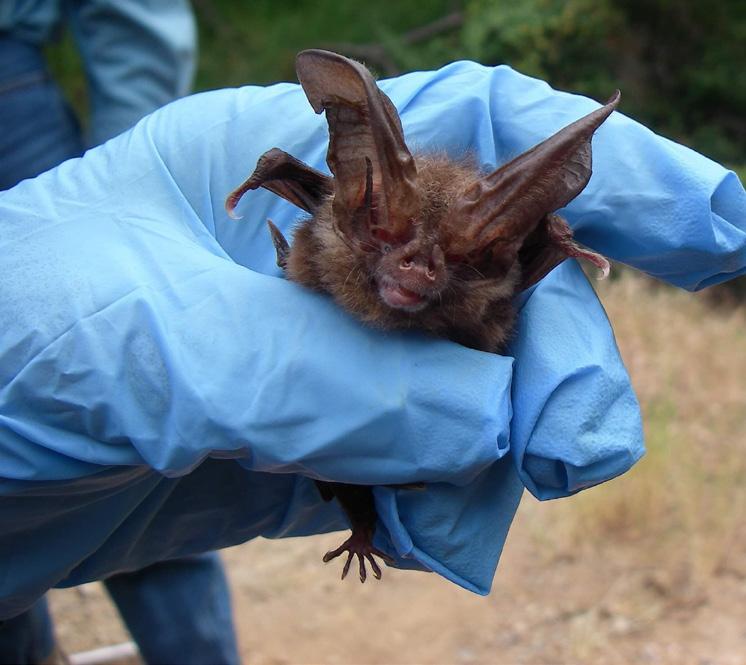
5
8
An Island with resilient native animal populations where rare and endemic Island fauna are not at risk.
4. research and partnership development
Catalina Island Conservancy is maximizing opportunities for research and collaboration with partners in academia, research institutions, NGOs and other land trusts to expand the knowledge and educational base for its own and society’s management needs.
Landscape level conservation management requires an interdisciplinary approach where ecologists, taxonomists, archaeologists, geologists, historians, botanists, wildlife biologists, social scientists and others work together to increase understanding of the Island’s natural systems. The Conservancy employs a group of specialized biologists and land managers, knowledgeable of the Island’s resources and logistics, who partner with researchers and volunteers in the development and implementation of long-term studies and provide data and information in support of research. These opportunities will continue to grow as more conservation issues are addressed and new tools are developed. These partnerships provide key information to support the management decisions by the Conservancy, are a source of future staff and provide a cost-effective way to expand the reach of the organization.
Programs we will implement:
• Develop and share geospatial information and analysis
• Collaborate with outside researchers
There are several important conservation challenges and questions that need long-term and focused research efforts to be answered effectively. Research on these conservation priorities is essential for the Conservancy to continue to make sound, science-based decisions about the management of the resources in its care. Unlike many islands that are isolated and hard to reach, Catalina is ideally placed just 20 miles off the coast of Southern California for external input and collaboration. Numerous universities and their scientists and educators are eager to collaborate with the Conservancy to leverage knowledge and resources. More than 100 current and past researchers have studied aspects of Catalina’s unique biodiversity and we look forward to developing hundreds of new collaborations in the future.
• Contribute to the protection of nearshore marine systems
Goal 4.1 Develop robust and up-to-date geospatial information to support Conservancy management and, as appropriate, make available to public, government and university collaborators.
Goal 4.2 Catalina Island is viewed as a living laboratory for the exploration of all manner of applied and theoretical questions through robust and longterm research collaborations.
Goal 4.3 Nearshore terrestrial and marine ecosystems (e.g. kelp forests) are abundant, healthy and secure from negative hydrological and ecological alterations.
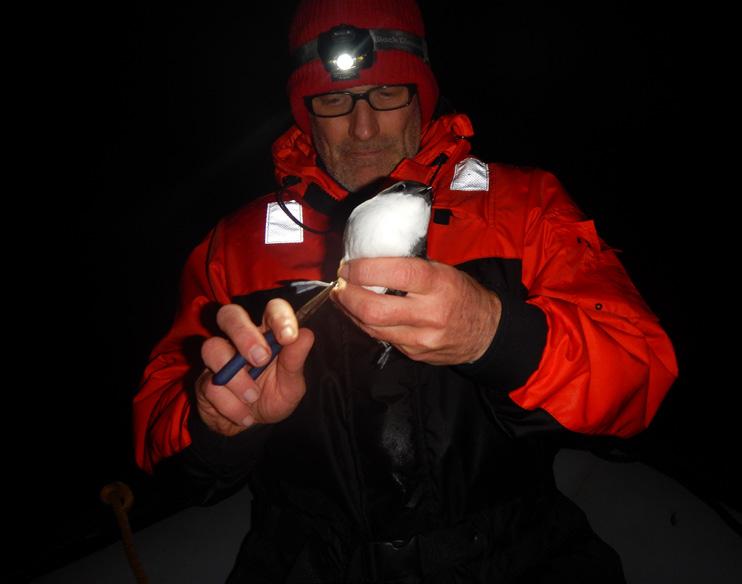
5
9
5. Cultural resources
An Island where the rich, multi-millennia human habitation of Catalina Island is inventoried, mapped and managed in ways that reflect its value to future generations and, for pre-historic sites, a sensitivity to the Native American community while complying with applicable local, state and federal laws.
Catalina has a rich history of human occupation. Native Americans began to inhabit Catalina approximately 9,000 years ago. Removed from the Island in the early 1820s, they left behind some 2,000 sites of archaeological significance. Additionally, remnants of the Civil War and World War II eras are scattered across the Island joined by historic buildings, the Wrigley Memorial and Botanic Garden, relics from mining, and cattle and sheep ranching.
For prehistoric sites, a comprehensive plan should include cataloguing archeological sites and assessing their current condition; what measures and technologies can be used to protect and preserve delicate archaeological sites (including soapstone quarries, pictographs and petroglyphs and other remnants); and how these sites (or a selection of them) can be best protected and interpreted for the public. Through partnerships with appropriate experts, additional activities may include documenting which groups besides the Tongva or Gabrielinos (the last indigenous people known to reside on the Island) lived here; managing and storing major archaeological collections; and what kinds of non-invasive explorations are possible given the locations and types of resources.
• Preserve indigenous cultural resources
• Protect historic cultural resources
• Maintain healthy bison population
In addition, the Conservancy maintains a non-native and historic herd of bison on Catalina Island as a connection to an important historical period and an educational tool. These animals link to one of the earliest conservation programs in the United States, the connections to filmmaking, the transition of ranching to conservation and the value of tourism in educating a broader public on the value of conservation.
Goal 5.1 Significant prehistoric cultural resources are identified, preserved and protected when possible (middens, habitation sites, lithic scatters, human remains, etc.).
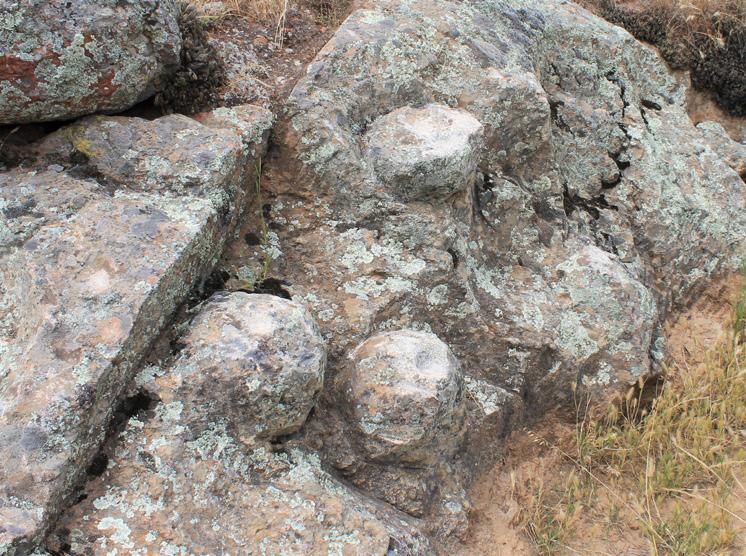
Goal 5.2 Historic cultural resources (buildings, Wrigley Memorial and Botanic Garden, mines, etc.) are appropriately and safely managed to reflect their value to current and future visitors to the Island.
Goal 5.3 Bison population is maintained within an acceptable population size and distribution, balancing ecosystem impacts with their recreational, historical and cultural value.
5
10
Programs we will implement:
6. sustainbility and balance
An organization that is a model in sustainability and in which conservation efforts, education and recreation are highly synergistic.
Conservation department will work closely with other departments to achieve our organization’s mission to be a responsible steward of its lands through a balance of conservation, education and recreation.
Catalina Island provides a unique “living classroom” to engage children, families, students and professionals in life-long learning about the natural and cultural history of Catalina, its conservation challenges and the sustainable behaviors that will ensure its long-term health and protection. We will continue to work hand-in-hand with our colleagues from the Education and the Communications Departments to provide information for education and public outreach programs that extend the Conservancy mission to external audiences.
An important element of managing a multiple-use landscape is the determination of how much use is too much and the development of tools to define, measure, monitor and enforce carrying capacity limits. We will collaborate with our colleagues from the Operations Department to develop methodologies to set these limits and implement the best management practices to achieve a balance between the impact of the various uses and the resilience and recovery of the Island’s ecosystems.
We are also committed to providing thought leadership on formation and implementation of sustainability policies and practices for the Conservancy in support of our organization’s vision of “promoting and modeling ecologically sustainable communities.”
• Land stewardship/ recreational presence

• Operations
• Communication
• Education
•
6.1 Sustain and promote excellence in sustainable nature-based recreation and ecotourism ensuring the long-term protection of Catalina.
6.2 Sustain and promote excellence in environmental education and communications in support of the Conservancy’s conservation management goals, and promote conservation values and behaviors to Catalina’s residents, visitors and a global society.
6.3 Develop and implement sustainable practices in the operations of the Catalina Island Conservancy including, but not limited to energy use, water use and discharge, waste/recycling, responsible sourcing practices and greenhouse gas emissions.
5
11
We will support and closely collaborate with our colleagues addressing:
Sustainability best practices
Appendix 1: Endemic Animal Species
MAMMALS
Catalina California ground squirrel (Otospermophilus beecheyi nesioticus)
Santa Catalina Island fox (Urocyon littoralis catalinae)
Santa Catalina Island deer mouse (Peromyscus maniculatus catalinae)
Santa Catalina Island harvest mouse (Reithrodontomys megalotis catalinae)
Santa Catalina Island shrew (Sorex ornatus willetti)
BIRDS
Bewick’s Wren (Thryomanes bewickii catalinae)
Catalina California quail (Callipepla californica catalinensis)
Catalina Hutton’s Vireo (Vireo huttoni unitti)
INVERTEBRATES
Avalon hairstreak butterfly (Strymon avalona)
Scarab beetle (Coenonycha clypeata)
Scarab beetle (Coenonycha fulva)
Scarab beetle (Phobetus ciliatus)
Scarab beetle (Serica catalina)
Catalina Walkingstick (Pseudosermyle catalina)
Catalina shield-back cricket (Neduba propsti)
Catalina orangetip butterfly (Anthocharis cethura catalina)
Dasytastes insularis
Dasytastes catalinae
Jerusalem cricket (Stenopelmatus n. spp.)
Horsehair worm
Thief ant (Solenopsis texana catalinae)
Silk-spinning cricket (Cnemotettix miniatus)
Catalina cicada (Okanagana hirsuta)
Strigota seclusa
Darkling beetle (Metoponium insulare)
Darkling beetle (Eleodes omissa catalinae)
Oligomerodes catalinae
Fuzzy weevil (Trigonoscuta catalina)
Euvrietta catalinae
Soldier beetle (Cantharis hatchi dorothyae)
Painted tiger moth (Arachnis picta meadowsi)
Scavenger moth (Holocera phenacocci)
Tortricid moth (Eucosma avalona)
Cambrid snout moth (Evergestis angustalis catalinae)
Blotched leaf miner (Amauromyza insularis)
Evylaeus avalonensis
Anthophora urbana catalinae
Cuckoo bee (Nomada avalonica)
Catalina long-horned bee (Exomalopsis cockerelli)
5
12
Appendix 1 (continued): Endemic Animal Species
Catalina long-horned bee (Melissodes scottii)
Monkey grasshopper (Morsea californica catalinae)
Snout beetle (Stenoptochus inconstans)
Catalina crab spider (Misumenops importunes belkini)
Catalina millipede (Bollmaniulus catalinae)
Small millipede
Catalina centipede (Pectiniunguis catalinensis)
Catalina centipede (Pectiniunguis heathi catalinae)
Catalina mountain snail (Radiocentrun avalonense)
Avalon land snail (Micrarionta beatula)
Catalina Island snail (Micrarionta rufocincta)
Catalina snail (Micrarionta catalinae)
Catalina cactus snail (Xerarionta kellettii)
Catalina lancetooth snail (Haplotrema catalinense)
5
13
Appendix 2: Endemic plants
CATALINA ISLAND ENDEMICS
Santa Catalina Island manzanita (Arctostaphylos catalinae) CRPR: 1B.2
Catalina Island mountain mahogany (Cercocarpus traskiae) CRPR: 1B.1
Catalina Island dudleya (Dudleya virens subsp. hassei) CRPR: 1B.2
Santa Catalina Island buckwheat (Eriogonum giganteum var. giganteum) CRPR: 4.3
Santa Catalina Island bedstraw (Galium catalinense subsp. catalinense) CRPR: 1B.3
Santa Catalina Island ironwood (Lyonothamnus floribundus subsp. floribundus) CRPR: 1B.2
Santa Catalina Island bush-mallow (Malacothamnus fasciculatus var. catalinensis) CRPR: 4.2
Trask’s yerba santa (Eriodictyon traskiae subsp. traskiae) CRPR: CBR
Santa Catalina Island monkeyflower (Diplacus traskiae) CRPR: 1A
CHANNEL ISLAND ENDEMICS
Silver lotus (Acmispon argophyllus var. argenteus)
Island broom (Acmispon dendroideus var. dendroideus) CRPR: 4.2
Catalina manzanita (Arctostaphylos catalinae) CRPR: 1B.2
Island morning-glory (Calystegia macrostegia subsp. macrostegia) CRPR: CBR
Robust suncups (Camissoniopsis robusta)
Feltleaf ceanothus (Ceanothus arboreus) CRPR: CBR
Island ceanothus (Ceanothus megacarpus var. insularis) CRPR: 4.3
Catalina mountain-mahogany (Cercocarpus traskiae) CRPR: 1B.1
Nevin’s wooly sunflower (Constancea nevinii) CRPR: 1B.3
Island rushrose (Crocanthemum greenei) CRPR: 1B.2
Island tarplant (Deinandra clementina) CRPR: 4.3
Channel Island tree poppy (Dendromecon harfordii var. rhamnoides) CRPR: 3.1
Greene’s live-forever (Dudleya greenei) CRPR: 4.2
Catalina live-forever (Dudleya virens subsp. hassei) CRPR: 1B.2
Trask’s yerba santa (Eriodictyon traskiae subsp. traskiae) CRPR: CBR
St. Catherine’s lace (Eriogonum giganteum var. giganteum) CRPR: 4.3
Island buckwheat (Eriogonum grande var. grande) CRPR: 4.2
Channel Island poppy (Eschscholzia ramosa) CRPR: 4.3
Santa Catalina bedstraw (Galium catalinense subsp. catalinense) CRPR: 1B.3
Nuttall’s island bedstraw (Galium nuttallii subsp. insulare) CRPR: 4.3
Showy island snapdragon (Gambelia speciosa) CRPR: 1B.2
Nevin’s gilia (Gilia nevinii) CRPR: 4.3
Island jepsonia (Jepsonia malvifolia) CRPR: 4.2
Santa Catalina Island desert-thorn (Lycium brevipes var. hassei) CRPR: 3.1
Santa Catalina Island ironwood (Lyonothamnus floribundus subsp. floribundus) CRPR: 1B.2
Santa Catalina Island bush-mallow (Malacothamnus fasciculatus var. catalinensis) CRPR: 4.2
Southern island mallow (Lavatera assurgentiflora subsp. glabra) CRPR: 1B.1
Lyon’s phacelia (Phacelia lyonii) CRPR: 1B.2
Channel island scrub oak (Quercus pacifica) CRPR: 4.2
Island live oak (Quercus tomentella) CRPR: 4.2
Macdonald oak (Quercus x macdonaldii) CRPR: CBR
Island redberry (Rhamnus pirifolia) CRPR: 4.2
Santa Catalina figwort (Scrophularia villosa) CRPR: 1B.2
Island senecio (Senecio lyonii) CRPR: CBR
Santa Cruz Island rockcress (Sibara filifolia) CRPR: 1B.1
Wallace’s nightshade (Solanum wallacei) CRPR: 1B.1
Southern island clover (Solanum wallacei) CRPR: 4.2
5
14
Appendix 3: invasive plant management approach
A. Survey and map all known Avalon populations of:
• Ailanthus altissima
Arundo donax
Caesalpinia spinosa
Delairea odorata
Tamarix ramosissima
These five species have been eradicated in the wildlands in the past with known populations in the Avalon area. To continue this success story, we map these populations and monitor them with the possibility of eradication Island wide.
B. Survey/control all known active wildlands populations of:
Ailanthus altissima
Arundo donax
Asphodelus fistulosus
Caesalpinia spinosa
Centaurea solstitialis
Centranthus ruber
Cortaderia selloana
Cotoneaster pannosus
Cynara cardunculus
Dimorphotheca fruticosa
Eriogonum fasciculatum
Genista linifolia
Genista stenopetala
Hedera helix
Lathyrus tingitanus
Malephora crocea
Pennisetum setaceum
Pittosporum undulatum
Plecostachys serpyllifolia
Spartium junceum
Stipa tenuissima
Tamarix ramosissima
Tragopogon porrifolius
Tribulus terrestris
Vinca major
These species are known to dominate ecosystems and there are plenty of examples of them doing so on the Island. Where they dominate, they alter plant communities and ecosystem function. The most profound example would be flax-leaf broom (Genista linifolia) increasing erosion in the Avalon area. These species are already prolific, and eradicating is not an option, so we instead find areas to control so they do not continue spreading.
5
16
•
•
•
•
•
•
•
•
•
•
•
•
•
•
•
•
•
•
•
•
•
•
•
•
•
•
•
•
•
Appendix 3: invasive plant management approach
C. Conduct early detection surveys in Avalon, Two Harbors and a prioritized subset of roads and trails for Early Detection Rapid Response (EDRR) target species:
• Acacia cyclops
Aegilops triuncialis
Arctotheca calendula
Brassica tounefortii
Cenchrus echinatus
Cenchrus longispinus
Centaurea cyanus
Centaurea diluta
Centaurea solstitialis
Chrysanthemoides monilifera
Cytisus scoparius
Cytisus striatus
Delairea odorata
Dittrichia graveolens
Elaeagnus angustifolia
Euphorbia helioscopia
Euphorbia terracina
Galenia pubescens
Helminthotheca echioides
• Hypericum canariense
Lepidium chalepense
Lepidium draba
Melinis repens
Malephora crocea • Oenothera xenogaura • Oncosiphon piluliferum • Parthenium hysterophorus • Pilosella aurantiaca • Rhamnus alaternus • Rytidosperma caespitosum • Rytidosperma penicillatum • Senecio leptophyllus • Senecio linearifolius • Senecio quadridentatus • Senna didymobotrya • Tribulus terrestris • Volutaria tubuliflora
These are highly invasive species. If any of these species are found in the wildlands, they will end up costing our program significant time and money. These species have the potential to alter ecosystems – especially our more sensitive areas such as riparian herbaceous, coastal marsh and maritime cactus scrub. Preventing them from entering the wildlands is one of the most cost-effective pieces of our program.
5
17
•
•
•
•
•
•
•
•
•
•
•
•
•
•
•
•
•
•
•
•
•
•
Appendix 4: Conservation plan framework
For internal use.
5
18













